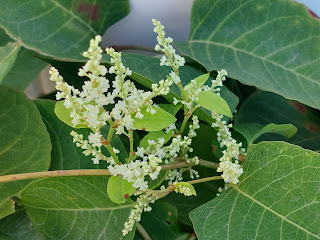Purple potoes/ ឡូងបារាំងពណ៌ស្វាយ/ ដំឡូងជ្វា

ដំឡូងបារាំងពណ៌ស្វាយ, 'Vitelotte potato'
My personal journal of a budget-friendly vegetables and herbs propagation in my Redneck Backyard Nursery. Most of which I recalled growing up eating it in a traditional Khmer cooking. In the West, some aren't readily available even at an Asian markets. https://www.ncagr.gov/cyber/kidswrld/plant/nutrient.htm


